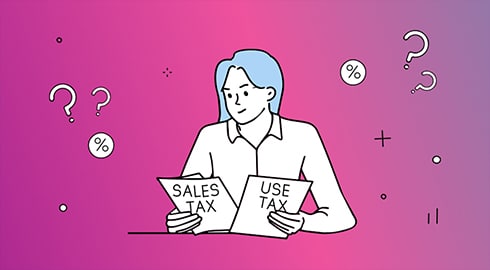Selling via a marketplace can carry significant growth opportunities for a business, but what happens to the sales tax liability? Is the sales tax responsibility with the marketplace or with the seller? Did you miss something critical regarding your vendor role when scanning the terms and conditions of your preferred e-commerce platform?
Fortunately, we’re here to help clear up some of the most common misconceptions surrounding marketplace rules and seller obligations when managing US sales tax.
E-commerce and sales tax
In the past, e-commerce merchants could fly relatively under the radar when selling goods online, with little to no sales tax obligations. Those days are gone.
The most significant shift for e-commerce occurred in June 2018, when a landmark case turned the course on sales tax collections for goods – the Wayfair vs South Dakota ruling. This ruling redefined taxable goods and the criteria for business owners eligible to pay sales tax. Before the ruling, only a business’ physical presence in a state (physical nexus) would determine sales tax obligations. However, this quickly became outdated as e-commerce grew. Hence, the introduction of an economic nexus – meaning that e-commerce merchants that surpass a certain (state-specific) threshold, regardless of their location, could now be eligible to collectpay sales tax in multiple states.
What’s putting your e-commerce at risk?
Several things can put your e-commerce at risk of exposure when managing your sales tax. This includes missed filing deadlines, mismanaging exemption certificates, errors in your sales tax calculations, changes in legislation or unconfirmed physical and economic nexus.
However, there’s one lesser-known contributing factor that plays a role in successful e-commerce sales tax compliance – marketplace rules. Different marketplaces hold vendors subject to different marketplace rules (sales tax rules). As a seller, you need to know what your obligations are and what you are held accountable for – here’s how.
The role of marketplace facilitators and US sales tax
Most online sellers sell via marketplace sites such as Amazon, eBay, Walmart or Etsy. These platforms are known as marketplace facilitators. Shopify is the exception to this rule, as the site allows you to build your own store and does not form part of a marketplace. When selling via a marketplace facilitator, some sales tax obligations fall on the marketplace facilitator. However, and this is key, not all of the obligations – you’re not entirely off the hook.
For example, suppose you’re selling via a marketplace which collects the sales tax on behalf of the seller. If this is the case, you’re still obligated to file a zero sales tax return on these transactions. This indicates your sales via the marketplace with no tax due (as the marketplace collected it on your behalf).
The sales tax obligations per seller differ per facilitator and state. Therefore, sellers must become familiar with their state-specific requirements per marketplace. It’s also important to note that sales through marketplaces can also affect your economic nexus thresholds. Some states include marketplace sales in the calculation for the economic threshold (like Connecticut and Georgia), while others do not (Alabama and Indiana).
Simple steps to e-commerce sales tax compliance in the US
So, how do you move from a state of confusion to state-wide confidence and compliance? Here are a few easy steps to get you on the right track.
Step 1: Confirm your nexus
Your nexus ultimately determines your sales tax obligations per state. For example, your nexus can be determined by the states where you sell, the location of your warehouses, the location of your employees or your sales and invoicing thresholds.
Step 2: Determine your taxable products
Your taxable products may vary per state. Confirm which products or goods classify as taxable and which are exempt. Remember that exempt sales must be filed in your sales tax return.
Step 3: Start collecting sales tax
In cases where your marketplace facilitator is responsible for collecting your sales tax, each seller still must ensure that they have correctly set up their collection settings. In addition, double-check that each transaction charges the correct state and local rate per product.
Step 4: File your returns
Once you’ve registered for sales tax, all returns per state must be filed in accordance with the state-specific deadlines and filing regulations. Remember that this must occur even if you’re reporting zero sales tax collected. Marketplace facilitators only collect sales tax; they don’t reportremit it for you.
Confident compliance for your e-commerce business with Complyt
What if you didn’t have to worry about sales tax (like at all) and still stayed 100% compliant in each state you’re selling to? Let’s face it, managing marketplace rules while simultaneously fulfilling your retail sales tax obligations for each transaction made from other channels can be a daunting and complicated process.
Remove the work and worry from e-commerce sales tax compliance and automatically meet all your obligations from all income streams in one simplified solution.









